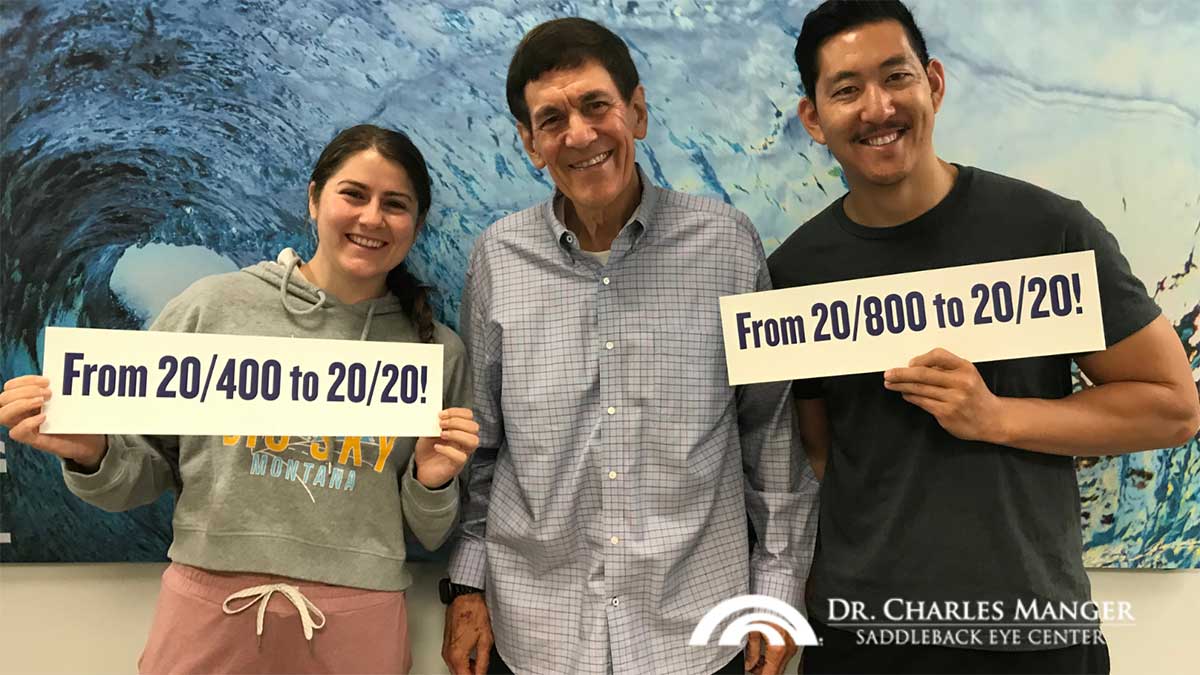Deciding to undergo LASIK eye surgery is a significant step towards achieving clearer vision and eliminating the need for glasses or contact lenses. While common and generally safe, this procedure requires careful attention during the recovery phase to ensure the best outcomes and minimize potential complications. Understanding and following the dos and don’ts after LASIK surgery can significantly impact the success of your recovery, enhancing both the immediate and long-term results of your procedure.
Today, we’ll discover some of the most crucial dos and don’ts you should follow after a LASIK eye surgery.
Essential Do’s for a Smooth LASIK Recovery
There’s a long list of what you should do after a LASIK eye surgery, but below is a list of the most essential things you MUST follow for a smoother and more efficient recovery process:
Adhering to Post-Operative Instructions
Following your LASIK surgery, your eye surgeon will provide comprehensive instructions tailored to your specific case. These instructions are designed to guide you through the critical initial phase of healing, address everything from protecting your eyes to managing discomfort, and include guidance on resuming work, driving, and other daily activities
The post-operative instructions provided by your eye surgeon are tailored to your specific case and the specifics of your surgery. These guidelines are designed to minimize the risk of complications, such as infections or delayed healing, which could negatively impact your vision recovery. By strictly following these instructions, you are essentially ensuring that your recovery process is as smooth and efficient as possible, directly influencing the success of the surgery and the longevity of its results.
Proper Eye Drop Usage and Schedule
Eye drops are pivotal in preventing infection, reducing inflammation, and keeping your eyes lubricated after surgery. Each type of eye drop has a specific purpose:
- Antibiotic eye drops are crucial for preventing bacterial infections.
- Anti-inflammatory eye drops help reduce swelling and discomfort.
- Lubricating eye drops alleviate feelings of dryness and irritation.
- Ensure the eye drops are stored correctly, according to the manufacturer’s instructions, to maintain their effectiveness.
- Follow your doctor’s instructions for how long to continue each type of eye drop, as overuse or premature discontinuation can affect recovery.
Incorrect use or timing could compromise healing, lead to discomfort, or even result in infection. Thus, adhering to the prescribed schedule ensures optimal healing and comfort.
Protecting Your Eyes from Potential Hazards
After LASIK, your eyes are temporarily more vulnerable to external irritants and physical damage. Exposure to UV rays, dust, or smoke can not only cause discomfort but also potentially harm the healing tissue, delaying recovery or affecting the surgery’s outcome. Protective measures, like wearing sunglasses, help shield your eyes from these risks, promoting a safer and quicker healing process. Additionally, it’s advisable to avoid dusty, smoky, or windy environments to prevent foreign particles or contaminants from coming into contact with your sensitive eyes.
Maintaining Hydration and a Balanced Diet
As surprising as it may be, maintaining adequate hydration and nutrition play a critical role in the healing process. Adequate hydration helps maintain optimal moisture levels in your eyes, reducing the risk of dryness and discomfort. A diet rich in vitamins and minerals supports overall health and aids in tissue repair.
For example, omega-3 fatty acids can improve cell function, while vitamins C and E protect cells from oxidative stress, contributing to a smoother recovery and potentially enhancing the quality of your vision post-surgery.
Getting Adequate Rest and Sleep
Rest and sleep are vital components of the healing process. Ensuring you get plenty of both after your LASIK surgery is crucial for allowing your body and eyes to recover. Protective eyewear, as provided by your surgeon, is recommended to shield your eyes while sleeping, preventing accidental rubbing or pressure that could disrupt the healing process.
Attending Follow-Up Appointments
The importance of follow-up appointments with your professional LASIK surgeon in recovery cannot be overstated. These visits allow your surgeon to monitor your healing and catch any potential issues early. It’s crucial to:
- Keep all scheduled appointments to ensure proper healing and adjustment of medications as needed.
- Use these opportunities to discuss any concerns or unusual symptoms with your doctor.
- List any new symptoms or changes in vision you’ve experienced since your last visit.
- Ask for advice on activities and when it’s safe to resume them, such as exercise, work, and driving.
Without follow-up appointments, you’ll be prone to multiple problems, wasting your investment. So, it is vital to be committed to this post-operative process.
Crucial Don’ts to Avoid Complications After LASIK
Now that we know what to do, let’s discuss what we should avoid doing. Avoiding specific activities and behaviors is critical to preventing complications that could hinder your recovery. Below are the crucial variables to avoid:
Rubbing or Touching Your Eyes
The instinct to rub your eyes when they feel dry or irritated can be strong, but resisting this urge is crucial. Rubbing can dislodge the corneal flap created during LASIKsurgery, leading to complications that could significantly affect your vision correction. Keeping your hands away from your eyes prevents physical damage to the healing tissue and reduces the risk of introducing bacteria, which can cause infections.If you’re experiencing severe discomfort, reach out to your eye care provider for advice on how to alleviate these symptoms safely.
Strenuous Activities and Exercise
Avoid heavy physical activities and exercises at all costs. It’s essential to give your body—mainly your eyes—the rest they need to heal. Engaging in heavy physical activities or exercises shortly after surgery can increase your blood pressure and stress your eyes, risking complications like bleeding, increased swelling, or flap displacement. Limiting physical exertion allows your body to dedicate more energy to healing your eyes, leading to a faster and more uneventful recovery.
Exposure to Harsh Environments
Specific environments can be more harmful to your healing eyes than others. To avoid unnecessary complications, keep these points in mind:
- Stay away from dusty or sandy areas where particles can quickly get into your eyes and cause irritation or infection.
- Avoid smoke-filled rooms, as smoke can dry out and irritate your eyes, delaying the healing process.
- Protect your eyes from chemical fumes in cleaning supplies or industrial areas, as these can irritate sensitive eyes.
This may seem trivial, but avoiding such environments will increase the effectiveness of your recovery.
Using Makeup and Cosmetic Products
In the weeks following your LASIK surgery, avoiding using makeup and cosmetic products around your eyes is wise. These products can harbor bacteria and chemicals that may lead to infections or allergic reactions. Applying and removing makeup can also put unnecessary pressure on your eyes, risking the integrity of the surgical site.
Swimming or Using Hot Tubs
Water activities can pose a significant risk to your healing eyes for several reasons:
- Chlorinated pools and natural bodies of water contain bacteria and microorganisms that can lead to severe infections in a post-LASIK eye.
- Hot tubs and saunas can increase the risk of dry eyes, exacerbating discomfort and potentially impacting healing.
Remember that swimming pools and hot tubs contain dangerous substances, so never jump into this while you’re healing.
Driving Until Cleared
Getting behind the wheel immediately after LASIK might seem like a testament to the procedure’s success, but waiting until your eye doctor clears you for driving is essential. Post-surgery, your vision may fluctuate, and your eyes might be more sensitive to light, making driving dangerous, especially at night. Wait for your doctor’s signal.
The Importance of This List?
Understanding the dos and don’ts given is essential for a reason. This list isn’t just a set of guidelines—it’s your roadmap to a successful recovery and optimal long-term vision.
Ensures a Successful Recovery Process
A successful recovery from LASIK surgery hinges on the delicate balance between following professional advice and allowing your body the time it needs to heal. This list is a tailored guide crafted from extensive clinical experience and patient feedback designed to navigate you through this crucial phase. Adhering to these guidelines minimizes the risk of complications, such as infections or delayed healing, which could compromise your results.
Moreover, avoiding certain activities and habits provides your eyes with the best environment to heal efficiently. It’s about making informed choices that protect the investment you’ve made in your vision.
Maximizes the Benefits of LASIK Surgery
Following the prescribed list is not only about ensuring a smooth recovery; it’s also about maximizing the benefits of your LASIK investment. Let’s break down how this adherence impacts your long-term vision quality:
- Enhances visual outcomes: By following post-operative care instructions carefully, you support the healing process, leading to more precise, more stable vision.
- Reduces risk of complications: Adhering to the don’ts, like avoiding eye rubbing and staying out of harsh environments, directly lowers the chance of complications that could affect your vision.
- Speeds up the recovery timeline: When you follow the do’s, such as attending follow-up appointments and using eye drops as prescribed, you’re likely to experience a faster recovery, letting you enjoy your improved vision sooner.
- Ensures lasting results: Proper care doesn’t just affect the immediate aftermath of surgery; it influences the longevity of your results, helping maintain your enhanced vision for years to come.
You don’t want to waste the LASIK eye surgery cost you paid, so you must maximize the benefits of LASIK surgery as much as possible. And what better way to do it than following the dos and don’ts list provided?
Final Thoughts: Choosing Saddleback Eye Center
Embracing the post-LASIK period with attention and diligence is crucial for maximizing the benefits of your vision correction journey. By adhering to the outlined do’s and don’ts, you’re actively contributing to a smooth recovery and securing the best outcomes for your eyesight. At the forefront of understanding, this is a top-of-mind clinic that provides the best LASIK eye surgery—Dr. Manger’s Saddleback LASIK Eye Center.
Learn more about our clinic and our comprehensive service by connecting with us. Book your schedule today or contact us for any inquiries.





